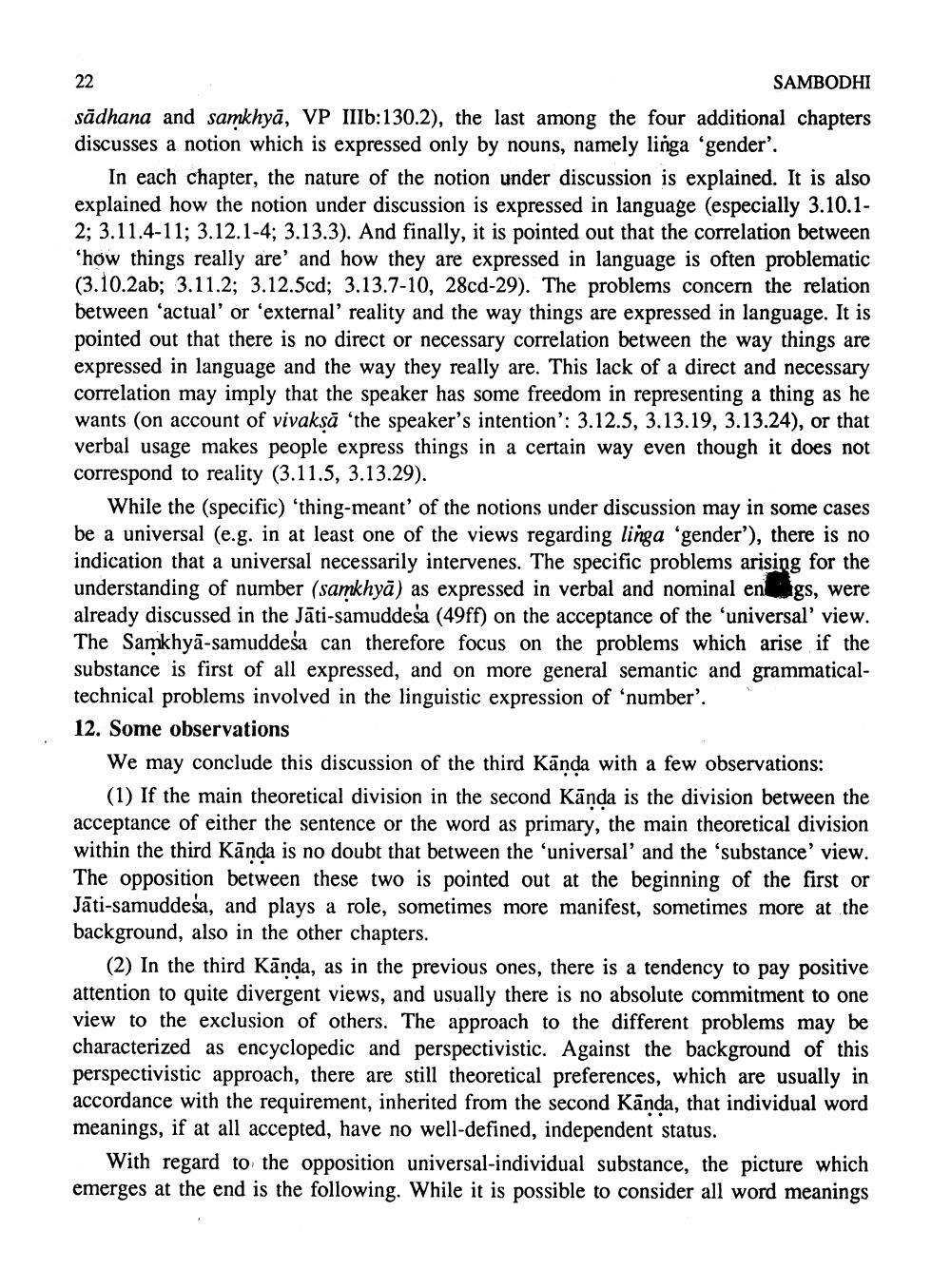________________
22
SAMBODHI sādhana and samkhyā, VP IIIb:130.2), the last among the four additional chapters discusses a notion which is expressed only by nouns, namely linga 'gender'.
In each chapter, the nature of the notion under discussion is explained. It is also explained how the notion under discussion is expressed in language (especially 3.10.12; 3.11.4-11; 3.12.1-4; 3.13.3). And finally, it is pointed out that the correlation between "how things really are' and how they are expressed in language is often problematic (3.10.2ab; 3.11.2; 3.12.5cd; 3.13.7-10, 28cd-29). The problems concern the relation between 'actual' or 'external reality and the way things are expressed in language. It is pointed out that there is no direct or necessary correlation between the way things are expressed in language and the way they really are. This lack of a direct and necessary correlation may imply that the speaker has some freedom in representing a thing as he wants (on account of vivaksā 'the speaker's intention': 3.12.5, 3.13.19, 3.13.24), or that verbal usage makes people express things in a certain way even though it does not correspond to reality (3.11.5, 3.13.29).
While the (specific) 'thing-meant' of the notions under discussion may in some cases be a universal (e.g. in at least one of the views regarding linga 'gender'), there is no indication that a universal necessarily intervenes. The specific problems arising for the understanding of number (samkhyā) as expressed in verbal and nominal en ugs, were already discussed in the Jāti-samuddesa (49ff) on the acceptance of the 'universal' view. The Samkhyā-samuddesa can therefore focus on the problems which arise if the substance is first of all expressed, and on more general semantic and grammaticaltechnical problems involved in the linguistic expression of 'number'. 12. Some observations
We may conclude this discussion of the third Kānda with a few observations:
(1) If the main theoretical division in the second Kānda is the division between the acceptance of either the sentence or the word as primary, the main theoretical division within the third Kānda is no doubt that between the 'universal' and the 'substance' view. The opposition between these two is pointed out at the beginning of the first or Jāti-samuddesa, and plays a role, sometimes more manifest, sometimes more at the background, also in the other chapters.
(2) In the third Kānda, as in the previous ones, there is a tendency to pay positive attention to quite divergent views, and usually there is no absolute commitment to one view to the exclusion of others. The approach to the different problems may be characterized as encyclopedic and perspectivistic. Against the background of this perspectivistic approach, there are still theoretical preferences, which are usually in accordance with the requirement, inherited from the second Kānda, that individual word meanings, if at all accepted, have no well-defined, independent status.
With regard to the opposition universal-individual substance, the picture which emerges at the end is the following. While it is possible to consider all word meanings




